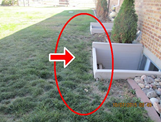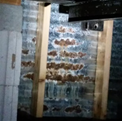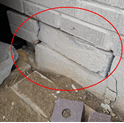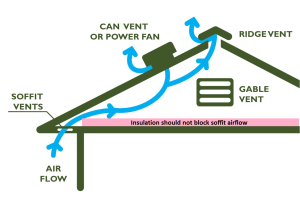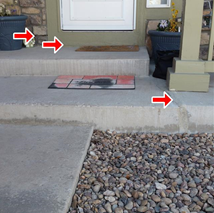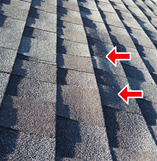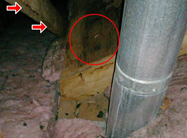What is the number one problem facing homes and homeowners today? If it wasn’t for the title above you may say bugs and pests, Radon gas, or the high cost of taxes and insurance (I for one feel the pain here). But the arch nemesis of any homeowner is water, and the damage it can cause. Read on for the straight skinny on the top causes of water damage to homes, and what you can do about it. Also feel free to call me with questions at any time.
As a home inspector, and a handyman who repairs damage to homes, I am in a unique position to observe firsthand the devastation water can cause, and to recommend a course of action to mitigate the effects of water. Enjoy!
Grading and Drainage
Get water away from your home as quickly as possible! I can’t stress this enough.
This is indeed the #1 problem and the one that causes the most costly damage by far. Older homes sit lower in the ground which makes it harder to quickly move water away, but steps can be taken even here to mitigate the effects of poor grading and drainage.
Poor grading and drainage leaves water near the home which can cause damage to the foundation resulting in sinking or settling, cracks and deterioration of the concrete or block, basement flooding, slanted floors and cracks in the home, and a huge price tag to fix. This problem can dramatically reduce the value of your home, your most valuable asset, and can make it very hard to sell in the future for a decent price. But with a little money and work, this problem can be managed and alleviated.
Here are some tips on how to manage water outside your home:
- Positive slope: the ground should slope down and away from the home at a rate of at least 1 inch per foot for the first 10 feet. After that, it should continue to move away from the home so that water cannot settle near the foundation.
- Ditches, Drains and Swales: if slope is not adequate to quickly move water away from the foundation, then the use of underground drains and strategically places ditches and/or swales can be used to route water away.
- Downspouts and extensions: above ground downspouts should have extensions of at least 6 feet (4 feet if the slope or grade is very good at that point). Underground downspout drains are a wonderful way to move water away from the home if they remain unclogged and they truly do exit a good distance from the home. Most of the time it is hard to tell. Use a hose to test.
- Material assist: if the ground near the home is porous and absorbs water quickly it would be wise to lay fabric (even plastic) under rock that is water resistant which will help the water move away from the home before it soaks into the ground.
- Vegetation: some vegetation close to the home will deter the movement of water and sometimes provide a dam of sorts which creates pooling above and below ground. Vegetation should be kept away from the home so that roots do not damage the foundation as well.
Here are a few examples I have seen!
Attic Ventilation
What do attic ventilation and water damage have in common? Well hold onto your hats, you are about the educated. And it’s my pleasure!
A poorly ventilated attic can get really hot, and a really hot attic can cause causes ice dams in the winter, roof damage, and occasionally mold in the attic. All problems are tied to water!
Attics are not within the envelope of the home and are supposed to be well ventilated so that they are cool in the summer and cold in the winter. The air temperature in an attic should not be much different than the outside air temperature. And this is accomplished with ventilation. As an inspector I look for adequate ventilation both low and high on the house creating a chimney effect – drawing air from below usually through soffit vents, and exiting high near the peak of the roof using ridge, can, and gable vents.
There should be one square foot of both low and high ventilation for every 300 square feet of main floor or attic floor apace. For instance, a home with an attic floor of 1,200 square feet should have a minimum of 4 square feet of soffit vent openings and 4 square feet of high vent openings. Both are needed. See the diagram below.
The pictures below reveal the damage poor ventilation and water can cause.
Plumbing, or lack thereof!
At risk of stating the obvious, poor plumbing is at the root of a lot of water problems too.
I find a very high number of basement finishes that were likely not permitted. The clue is fairly poor workmanship which is a telltale sign the homeowner did it, or his best friend Bubba took on the job. You know, the guy who can do everything, but nothing well!
I recently saw a water line routed through the attic where it can and will freeze. Drain lines and traps plumbed that will rust out garbage disposals and definitely leak – just a matter of time. And of course what I call “special plumbing” – where I stand open mouthed and amazed that someone could actually route plumbing lines that resemble spaghetti.
The moral of the story – hire a professional, unless a professional is impressed or satisfied with your work. And always get a permit when running water lines.



